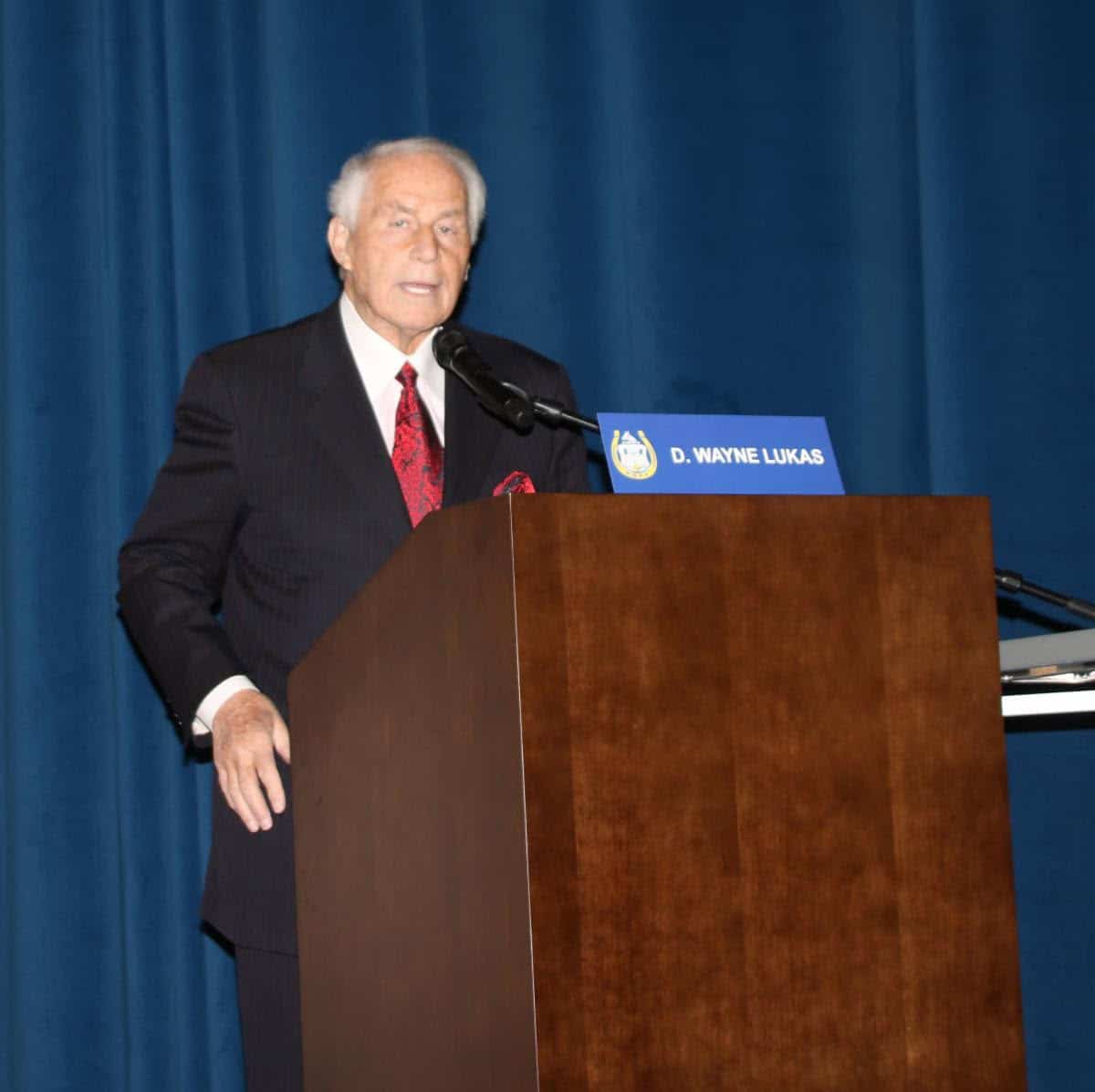RCI: Efforts Continue to Identify At-Risk Horses
Blood-Horse
The Association of Racing Commissioners International kicked off its 2015 convention April 21 with an emphasis on identifying at-risk racehorses and equine welfare issues—two things the organization believes are critical to the future of horse racing.
The conference, being held in Tampa, Fla., through April 23, also will have a strong bent toward medication and drug-testing issues. Outgoing RCI chairman John Ward Jr., executive director of the Kentucky Horse Racing Commission, touched on the topic in opening remarks.
Ward, a Kentucky Derby (gr. I)-winning trainer, recalled that in 2001 more than 10 therapeutic medications were permitted for use on race day in Kentucky. Now there is one—the anti-bleeding drug furosemide, also known as Lasix or Salix.
“That was in the rules of racing in 2001,” Ward said. “We decide to change our methods, and today we’re extremely proud of what we’ve done. We have cleaned up the sport and have made a difference.
“I’m going to put the word on the table now that we don’t need federal intervention; we need federal support across the country. There will be people who will be talking about change, and we want to be in the room when they talk about change.”
Industry officials believe federal legislation will be introduced this year that would allow the United States Anti-Doping Agency to oversee drug testing and related enforcement in horse racing. The last time such a bill was introduced in Congress was 2013.
RCI president Ed Martin for the past year has said identifying racehorses at greater risk of catastrophic injury should be a focal point for Thoroughbred racing. The April 21 roundtable served to update on progress in that regard, but also was a reality check that much more must be done.
Dr. Scott Palmer, equine medical director for the New York State Gaming Commission, said New York is looking into epidemiology, serum biomarkers, and advanced imaging techniques to better identify horses that may be at risk of serious injury. He said that with help from research based on the Equine Industry Database, there is a 65% “degree of accuracy” in identifying such horses, which leaves a still-high 35% that aren’t predictable.
“We have nearly exhausted what we can get from the Equine Injury Database in its current form,” Palmer said. “There is a baseline level of risk involved in the sport, but risk is not uniformly distributed across the (racehorse) population.”
Palmer called for more education of horsemen in the area of risk assessment and management because they spend the most time with horses.
“These guys know what’s going on because they see the horses every day,” Palmer said. “They are the best people to do the risk-factor analysis.”
Dr. Mary Scollay, equine medical director for the KHRC, wasn’t on hand at the convention but prepared a video outlining a 10-year experiment in Florida that proved the value of veterinary scratches before races. She also discussed intelligence gleaned by analyzing the results of equine drug tests, even those that haven’t produced positives.
Scollay said the KHRC has been able to identify trainers who use multiple non-steroidal anti-inflammatory drugs in their horses albeit within the rules for withdrawal times. Such regimens are believed to be a factor in catastrophic injuries.
“When trainers are using multiple (therapeutic) medications across the board in all horses aggressively, it’s not possible they know the soundness (level) of their own horses,” Scollay said.
Dr. Kathleen Anderson, incoming president of the American Association of Equine Practitioners, said veterinarians and horsemen have a partnership in taking care of the horse, but it’s designed to work when both parties are responsible. The AAEP, she said, has guidelines in place for proper therapeutic treatments and needs support from regulators.
“The art of training is well documented, and so should be the art of sports medicine,” Anderson said. “That’s what we try to do in the field in an ideal world.”
Anderson said that uniform medication guidelines are “essential” for clean sport and that therapeutic medications have their place in treatment for illness and for training. As for furosemide, she said the AAEP is awaiting the results of further research into exercise-induced pulmonary hemorrhage.
Anderson said she scopes 2,500-3,000 horses per year, and about 15% bleed on a routine basis.
“This tells me there is still a problem,” she said. “Until we’re able to get an alternative, the AAEP will endorse the use of Lasix for this purpose.”





